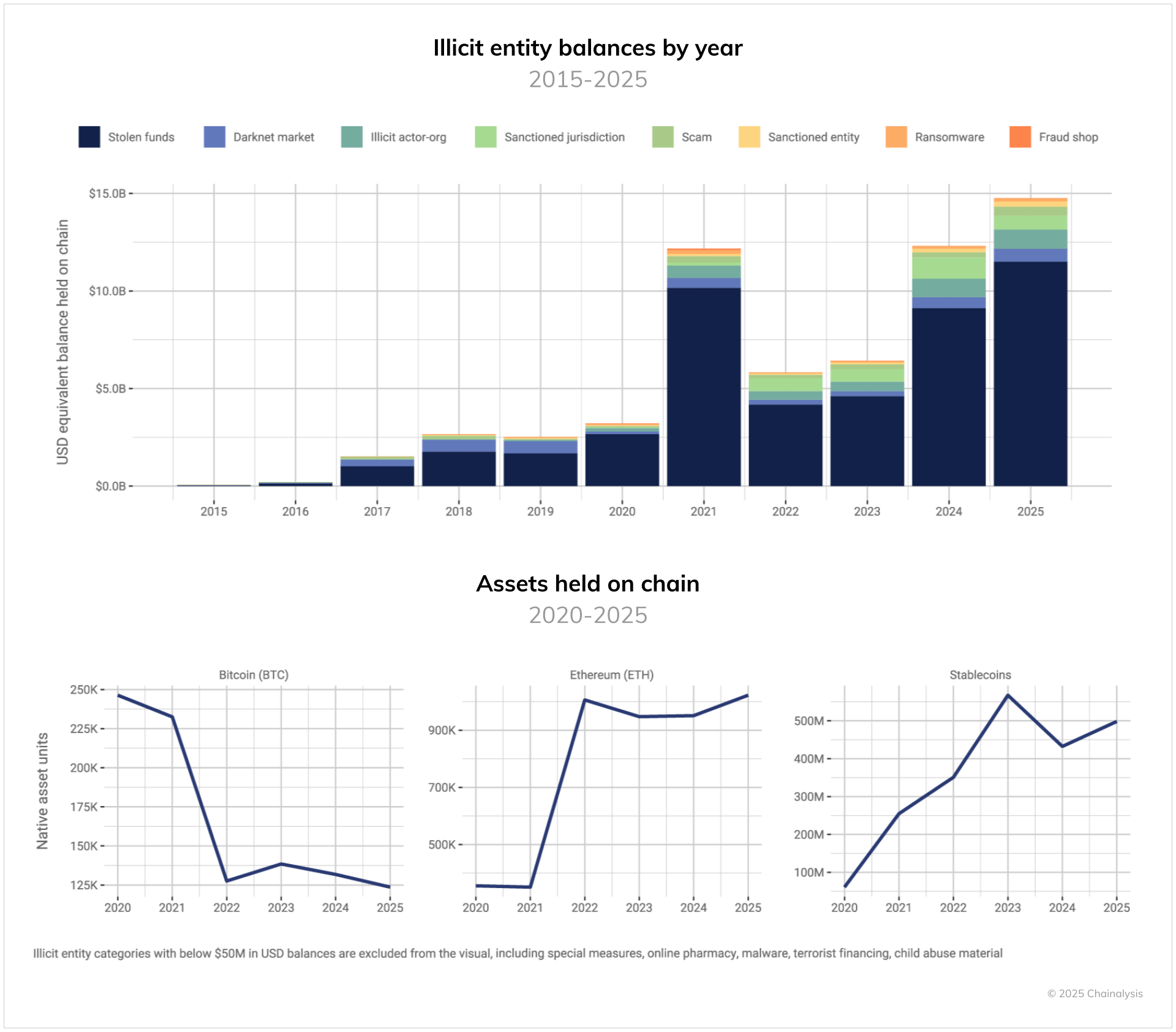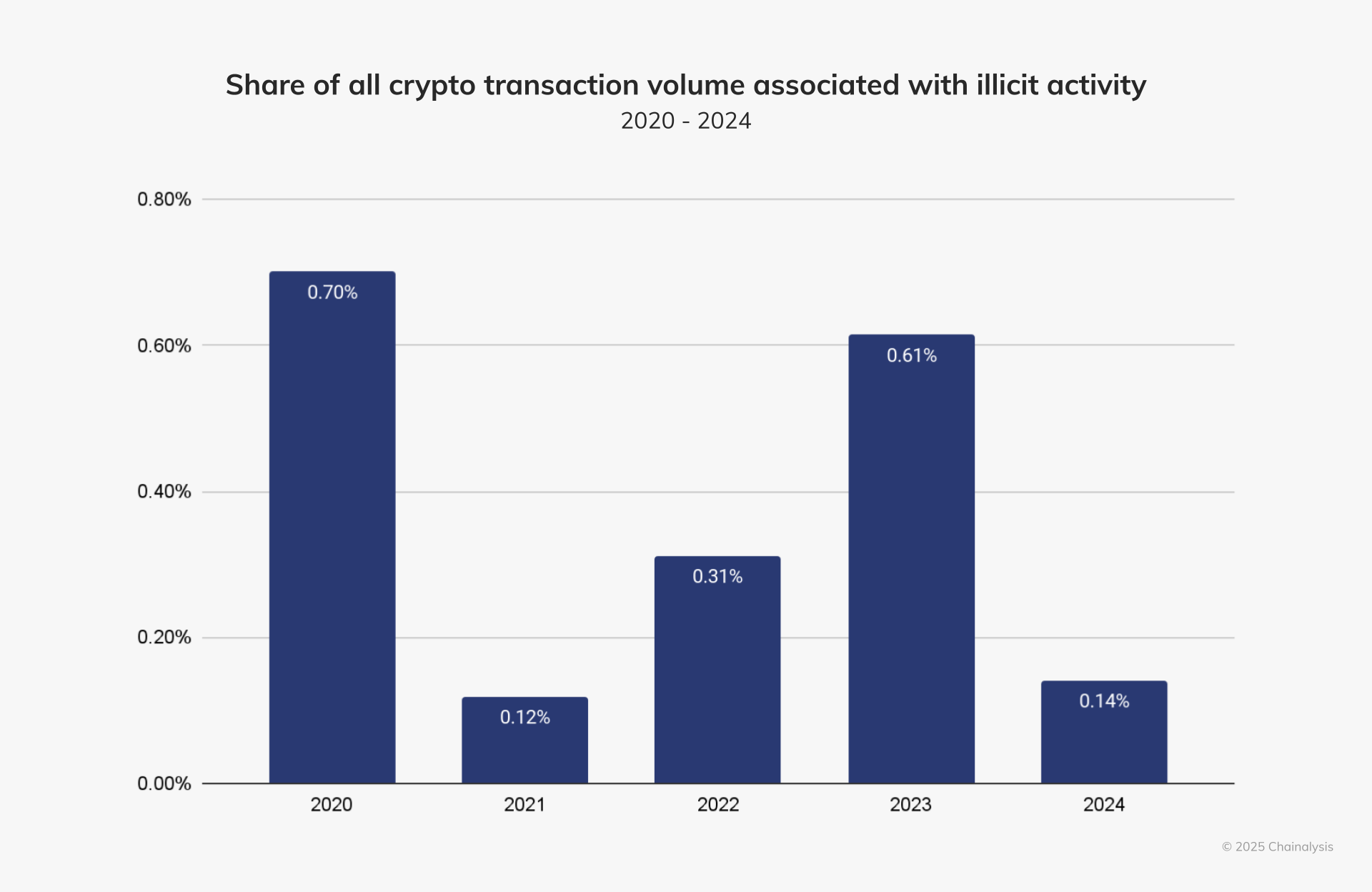Chainalysis estimates about $75 billion in crypto tied to illicit activity could be recoverable onchain; governments exploring national cryptocurrency reserves may be able to reclaim seized assets through coordinated law enforcement and forensic tracing.
-
$75 billion in potentially recoverable illicit crypto, per Chainalysis
-
About $15 billion held directly by illicit actors and $60B+ in downstream-exposed wallets
-
Roughly 75% of that value is in Bitcoin; stablecoins are an increasing share
Recoverable illicit crypto: Chainalysis finds $75B potentially seizable onchain — learn how governments could use seized assets to build reserves. Read more.
Chainalysis reports that roughly $75 billion in cryptocurrency linked to illicit activity appears traceable on public blockchains and may be theoretically recoverable, a development that could factor into government plans to assemble national cryptocurrency reserves.
As the United States and other governments consider creating national cryptocurrency reserves, new Chainalysis research suggests sizeable onchain holdings tied to illicit activity are identifiable and potentially seizable. That finding may influence how policymakers and law enforcement think about building official digital-asset stockpiles.
In a report published Thursday, Chainalysis estimated crypto balances connected to illicit activity total about $75 billion. That figure comprises approximately $15 billion held directly by illicit actors and over $60 billion in wallets downstream from those actors.
The blockchain analytics firm also found darknet market operators and vendors control more than $40 billion in crypto assets recorded on public ledgers.

Stolen assets represent the largest share of illicit cryptocurrency holdings. Source: Chainalysis
Chainalysis linked these estimates to policy proposals such as the U.S. Strategic Bitcoin Reserve and Digital Asset Stockpile, which would expand federal crypto holdings using budget-neutral mechanisms including asset forfeiture.
“[T]he cryptocurrency ecosystem presents law enforcement with an unprecedented opportunity: billions of dollars in illicit proceeds are sitting on public blockchains and are theoretically seizable if authorities can coordinate action,” the Chainalysis report states.
Chainalysis co-founder and CEO Jonathan Levin told Bloomberg that the figures elevate “asset forfeiture potential to a completely different level,” and that the data “does change how countries think about that.”

Source: Cointelegraph
In a separate enforcement action, Canadian authorities seized roughly $40 million in digital assets from TradeOgre, an exchange accused of operating without registration and facilitating money laundering, prompting debate within the crypto community about regulatory reach and due process.
Related: Bybit hacker launders 100% of stolen $1.4B crypto in 10 days
What is recoverable illicit crypto and how large is it?
Recoverable illicit crypto refers to blockchain-traceable assets tied to criminal activity that law enforcement can potentially seize. Chainalysis estimates about $75 billion is traceably connected to illicit activity, with ~75% held in Bitcoin and a growing share in stablecoins.
How could governments use recoverable illicit crypto for national cryptocurrency reserves?
Governments could convert seized crypto into official holdings via forfeiture and custody frameworks, subject to legal safeguards. Chainalysis’s breakdown — $15B directly held and $60B+ downstream exposure — suggests a meaningful nominal pool, though legal, logistical, and market-impact considerations limit direct conversion to reserve assets.
Why does blockchain transparency skew perceptions of crypto crime?
Blockchain transparency makes illicit flows visible and easier to quantify. Chainalysis reports illicit transactions were 0.14% of blockchain activity in 2024, while traditional finance laundering estimates from the United Nations Office on Drugs and Crime (UNODC) run 2–5% of global GDP, highlighting differences in visibility and scale.

Less than 1% of all crypto transaction volume is linked to illicit activity. Source: Chainalysis
Frequently Asked Questions
How accurate are Chainalysis estimates of illicit crypto?
Chainalysis uses onchain clustering and attribution heuristics to estimate illicit exposure; while industry-leading, estimates depend on available attribution data and can under- or over-count exposure due to false positives or untagged addresses.
Can seized crypto be used without affecting markets?
Seized volumes could impact markets if liquidated rapidly. Best practice involves custody, gradual disposition, and legal frameworks to minimize market disruption and preserve value for public benefit.
What legal barriers exist to governments building crypto reserves from seized assets?
Legal hurdles include chain-of-custody, judicial forfeiture processes, international cooperation for cross-border assets, and domestic policy limits on asset disposition. Due process and transparency are essential to legitimacy.
Key Takeaways
- Size of exposure: Chainalysis estimates ~$75B in crypto tied to illicit activity, with significant downstream exposure.
- Asset composition: About 75% of that nominal value is in Bitcoin; stablecoins are rising in share.
- Policy implications: Seized crypto could inform national reserve strategies but requires legal, custody and market-impact safeguards.
Conclusion
Chainalysis’s $75 billion estimate of recoverable illicit crypto highlights a new dimension for policymakers weighing national cryptocurrency reserves. While the theoretical pool is large, converting traceable illicit assets into sovereign holdings demands careful legal frameworks, transparent custody, and international cooperation. COINOTAG will continue tracking enforcement actions, regulatory proposals, and market signals as governments consider whether and how to integrate seized crypto into official stockpiles.
